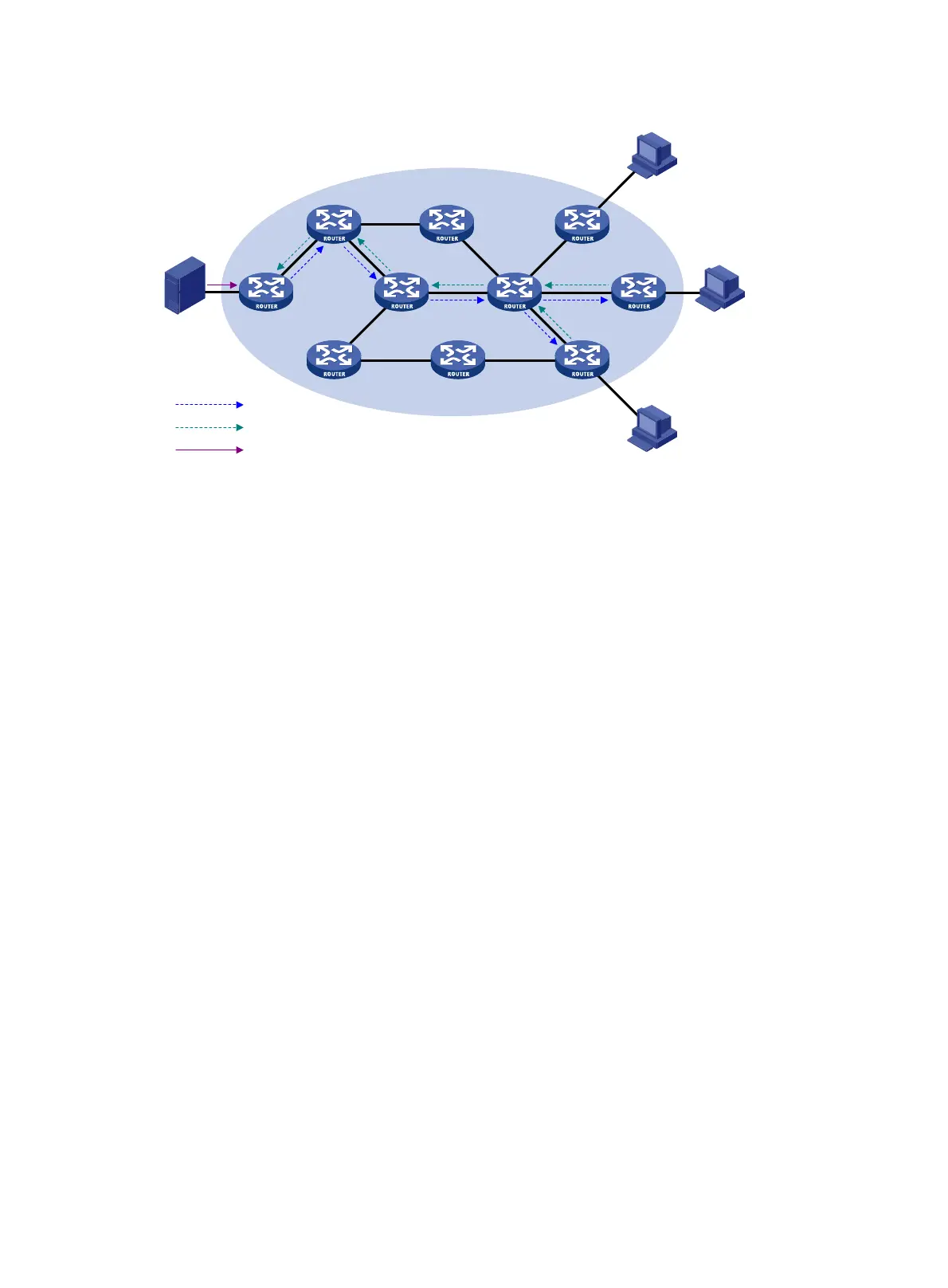92
Figure 41 SPT building in PIM-SSM
As shown in Figure 41, Host B and Host C are receivers. They send IGMPv3 report messages to their DRs
to express their interest in the multicast information that the multicast source S sends to the multicast group
G. The following takes one DR as an example:
After receiving a report message, the DR first checks whether the group address in this message is in the
SSM group range and does the following:
• If the group address is in the SSM group range, the DR sends a subscribe message toward the
multicast source S. All routers along the path from the DR to the source create an (S, G) entry to build
an SPT. The SPT is rooted at the multicast source S and has the receivers as its leaves. This SPT is the
transmission channel in PIM-SSM.
• If the group address is not in the SSM group range, the DR sends a (*, G) join message to the RP.
The multicast source registers with the RP.
In PIM-SSM, the term "subscribe message" refers to a join message.
Relationship among PIM protocols
In a PIM network, PIM-DM cannot run together with PIM-SM, BIDIR-PIM, or PIM-SSM. However, PIM-SM,
BIDIR-PIM, and PIM-SSM can run together. Figure 42 shows how the device selects one protocol from
among them f
or a receiver trying to join a group.
For more information about IGMP SSM mapping, see "Configuring IGMP."
Source
Server
Host A
Host B
Host C
Receiver
Receiver
Multicast packets
SPT
Subscribe message
DR
DR
RP

